International Journal of Agricultural Science and Food Technology
Optimization and Quality Properties of Fried Snack from a Blend of Wheat, High-Quality Cassava Flours, and Defatted Cashew Nut Meal Extrudate
Jackson Vala1, Ogori Akama Friday1* and Dingari Jackson2
1Department of Home Science and Management, Faculty of Agriculture, Federal University Gashua, Nigeria, P.M.B. 1005, Yobe State, Nigeria
2Department of Crop Production, Faculty of Agriculture, University of Maiduguri, P.M.B 1069, Maiduguri, Nigeria
Cite this as
Vala J, Friday OA, Jackson D. Optimization and Quality Properties of Fried Snack from a Blend of Wheat, High-Quality Cassava Flours, and Defatted Cashew Nut Meal Extrudate. Int J Agric Sc Food Technol. 2025;11(1):001-009. Available from: 10.17352/2455-815X.000223Copyright License
© 2025 Vala J, et al. This is an open-access article distributed under the terms of the Creative Commons Attribution License, which permits unrestricted use, distribution, and reproduction in any medium, provided the original author and source are credited.Simple Centroid Mixture Design (SCMD) was used to formulate fourteen experimental runs and optimize some quality attributes of fried snacks. The independent variables were wheat flour (WF: 70-100%), high-quality cassava flour (HQCF: 0-30%), and defatted cashew nut flour (DCNF: 0-30%). The blends were extruded and fried. The texture and color properties, oil absorption, bulk density, and sensory properties of the extruded fried snacks were optimized using SCMD. The sample with the most desirable index was selected through numeric optimization, and its sensory attributes were compared with those of extruded snacks made from WF. The optimum ingredient combination for the fried snack, which exhibited lower oil uptake, maximum bulk density, and desirable texture, was 76% WF, 1.55% HQCF, and 22.22% DCNF. The optimized sample had higher sensory desirability than the control (wheat flour), except for hardness and crispiness. In conclusion, HQCF and cashew nut meal can be used to produce high-quality extruded fried snacks.
Introduction
Wheat (Triticum spp.) is a temperate crop that does not thrive well under tropical conditions [1]. Its gluten content makes it a unique ingredient for baking bread. Various studies have demonstrated its versatility and potential in the production of biscuits, cookies, doughnuts, rolls (hamburgers, muffins), soft cakes, pizza, and chinchin with desirable texture and flavor [2].
Cassava (Manihot esculenta), native to South America, is extensively cultivated as an annual crop in tropical and subtropical regions for its edible, starchy, tuberous root, which is a major source of carbohydrates. It is a significant root crop and an important staple food for over 500 million people in the developing world [3]. The production process for High-Quality Cassava Flour (HQCF) was initially developed at the International Institute for Tropical Agriculture [4](IITA) in Nigeria in 1990 as an alternative to imported wheat flour for both the food and non-food industries; this technology is now used in several cassava-growing nations [5,6]. HQCF is produced from fresh cassava roots through a process of peeling, chipping, or grating, followed by dewatering, drying, and milling.
The cashew nut (Anacardium occidentale) is a tree crop of considerable economic importance. Over the years, the usefulness of cashew nuts has expanded beyond erosion control and revenue generation to include valuable applications in confectionery and desserts. Cashew nuts have a high content of monounsaturated fat, which can be extracted for products such as mayonnaise and salad dressing. They are also rich in protein (about 21%) [7]. Due to their high protein content, cashew nuts can be used alongside cereals to improve dietary profiles. Morton [6] reported that cashew nuts contain a high concentration of essential amino acids in the right proportions, which are often rare in nuts. Additionally, cashews are rich in magnesium, which works with calcium to support healthy muscles and bones Meyer [8]. According to Pamplona-Roger [7], cashew nuts contain no cholesterol and are low in saturated fat, with about 80% - 87% of their fat in the form of unsaturated fatty acids; consequently, their consumption may help reduce the risk of heart disease.
Extrusion cooking is an effective and economical method for cooking, texturizing, and shaping a wide range of plant and animal food raw materials in a continuous operation [10]. Food extrusion is a process in which a food material is forced to flow under various conditions of mixing, heating, and shearing through a die designed to form and/or puff-dry the ingredients. This high-temperature, short-time process is crucial for producing fiber-rich products and a variety of items such as breakfast cereals and snacks from starchy food materials [11]. Snack foods are typically cereal or tuber-based products that are generally low in protein and are often considered low-value items. Significant efforts have been made to improve the nutritional value of snack products by incorporating protein sources derived from plants or animals [12-14]. It is anticipated that careful combinations of these important food sources, followed by extrusion cooking, will yield acceptable snacks for both children and adults. Nutrient-dense snack products can be reconstituted by stirring in hot milk or consumed with soft drinks.
Deep-fat frying is a widely used method for preparing tasty foods with an attractive appearance. The tender and moist interior, along with a porous, crunchy crust, enhances palatability, contributing to the popularity of these foods. However, fried foods can have a significant fat content, sometimes reaching one-third of the total weight of the product [15]. The quality of expanded snacks depends on various factors, including the quality of raw materials, formulation, and processing conditions. Starch plays a vital role in controlling the texture and appearance of final products [16]. As the food industry expands, there is increasing emphasis on utilizing locally available raw materials to produce high-quality food products, supported by research activities and consumer awareness policies. In recent years, high-quality cassava flour has been used in various food formulations, including complementary foods, substrates for alcohol production, glucose syrup production, and other bakery products [17].
The general objective of this study is to evaluate some quality attributes of fried snacks made from blends of extruded wheat, high-quality cassava flour, and defatted cashew nut flour.
Materials and methods
Materials
Wheat Flour (WF) was purchased from a local Market in Abeokuta, Nigeria. High-Quality Cassava Flour (HQCF) and Cashew nut were obtained from the Industrial Processing Unit (IPU), the Federal University of Agriculture Abeokuta, Ogun State, Nigeria.
Processing of high-quality cassava flour
High-quality yellow cassava flour was produced using the method described by [18]. The fleshly harvested cassava roots were weighed, washed, peeled, sliced, and blanched at 80 oC for four minutes. They were dried and milled and then sieved before packaging in a polyethylene film before further utilization.
Preparation of defatted cashew nut flour
A modified method of Kosoko, et al. [19] was used to prepare defatted cashew nut flour. The cashew nuts were thoroughly sorted to remove any bad ones. The undehulled cashew seeds were washed with water to remove dirt and other contaminants. They were sun-dried for 90 minutes before roasting. The nuts were roasted in an oven at a temperature of 200 °C for 40 minutes. The covering testa was removed by squeezing, and then the nuts were winnowed to obtain a cream-colored nut. The nuts were then broken into smaller pieces and defatted using hexane solvent. The defatted nuts were milled using a Kenwood blender to produce flour. The cashew nut flour was sieved using a mesh size of 0.5 µm and packaged in polythene bags for further analysis.
Preparation of wheat-HQCF-cashew nut flour extruded snacks
Extruded fried snacks were prepared according to a modified method by Obadina, et al. [20]. A known amount of water was added to the dry ingredient combination based on the initial water content (wb) of the ingredients and adjusted to ensure that all samples contained the same moisture content (40%). Each composite flour blend (100 g) was preconditioned with the addition of warm water for 2 minutes to uniformly hydrate the raw material and eliminate any dry core. A laboratory-scale single-screw extruder with a screw length-to-diameter ratio of 16.43:1, a screw diameter of 18.5 mm, and a length of 304 mm was used for this work. The extruder consisted of two sections: the transmission and the die zones. The barrel section was heated with a band heater [21]. It was operated at full speed in all runs under the following constant conditions: barrel and die temperature (90 °C) and screw speed (60 rpm). The die-nozzle diameter was 15 mm. The non-expanded snacks were cut and then sliced into disc shapes with a thickness of 1 mm and dried in a cabinet oven at a temperature of 80 °C for 1 hour.
Optimization procedure
A Simplex Centroid Design (SCD), a mixture design for three components and above, was used in this study to optimize the combination of wheat flour (X1), high-quality cassava flour (HQCF) (X2), and defatted cashew nut flour (X3). The ingredient combinations were optimized concerning the responses of oil content, bulk density, color parameters, and texture. The constraints included X1, X2, X3, bulk density, oil content, texture properties, lightness (L*), redness (a*), and yellowness (b*). A numerical optimization technique was employed for the simultaneous optimization of multiple responses. The desired goal for each processing parameter and response was defined. All processing parameters were kept within specified ranges. To search for a solution, goals were combined into an overall composite function, D(x)D(x)D(x), called the desirability function [9], which is defined as:
D(x) = (d1×d2×d3×…dn)1/n
Where d1,d2,d3,…,dnd_1, d_2, d_3, \ldots, d_nd1,d2,d3,…,dn are the responses, and nnn is the total number of responses measured. Numerical optimization finds a point that maximizes the desirability function, with the maximum value of the function being unity (1.00). The characteristics of a goal may be adjusted by altering the weight or importance of specific parameters [22]. Three-dimensional graphs help in understanding the effects of varying ingredient combinations and processing parameters on the response, indicating whether the response is increasing or decreasing [23].
Frying of extruded snacks
Frying of extruded snacks was carried out according to a modified method from Dueik, et al. [24], using a deep-fat fryer (Bush Glass Fryer, Royton, UK) with thermostat control. The fryer was filled with 2 liters of oil, which was pre-heated before frying and discarded at intervals of 2 hours. The frying temperature and time combination was set at 150 °C for 3 minutes. The snacks were removed from the fryer and allowed to cool at room temperature before being packaged in high-density polyethylene bags for analysis.
Sample analysis
Oil content: The oil content was determined by solvent extraction using the Soxhlet method (Thermo Scientific EME3100/CEB, UK) [25]. Each extracted group was dried in a forced air oven at 105 °C for 24 hours (to constant mass), cooled in a desiccator, and then weighed to obtain the dry solids content. The oil uptake was determined by deducting the oil content of the sample from that of the blend from which the sample was obtained.
The bulk density of the fried extrudates was determined by measuring the actual dimensions of the samples [26]. Six pieces of fried extrudates were randomly selected from each formulation and weighed. The length and diameter of the samples were measured using a vernier caliper. The bulk density was calculated using the following formula:
Where:
BD = Bulk density (g/cm3),
m = Mass (g),
L = Length (cm),
π = 3.142 (const) and
d = Diameter (mm) of fried extrudate.
To determine the volume, the dimensions of the six randomly selected pieces of fried extrudates were measured using a vernier caliper. The volume (V) can be approximated for cylindrical shapes using the formula:
V=π(d2)2×hV = \pi \left( \frac{d}{2} \right)^2 \times hV=π(2d)2×h
Where ddd is the diameter and hhh is the height of the extrudate. After calculating the volume, the bulk density was reported in grams per cubic centimeter (g/cm³).
Analysis of other parameters
Color parameters: The color of the fried snacks was measured using a colorimeter, focusing on three main color coordinates: lightness (L*), redness (a*), and yellowness (b*). These values help quantify the visual appearance of the snacks, which is critical for consumer acceptance.
Texture analysis
Texture properties were assessed using a texture analyzer (e.g., TA.XT Plus, Texture Technologies), which measured parameters such as hardness, crispness, and chewiness. Standard test methods were followed to ensure the consistency and reliability of the results
Sensory evaluation
A sensory or Acceptability test was also conducted to rate the fried extruded snacks in terms of hardness, crispness, saltiness, flavor, taste, oiliness, and overall acceptability [27].
Data analysis
A second-order polynomial model for the dependent variables as shown in equation (2) was established to fit the experimental data. An Analysis of variance (ANOVA) test was carried out using Design – Expert Version 6 (Stat-Ease Inc., Minneapolis, MN.USA) to determine the level of significance at a 5% level. The generalized regression model fitted was
Where Y is the response; β0 is a constant; while βi, βii, and βij are linear, quadratic, and interaction coefficients, respectively; and ε is an error.
Results and discussion
>Optimization of wheat flour, HQCF, and defatted cashew nut meal snacks
The optimum flour combination for extruded fried snacks was determined using a numerical optimization tool in Design Expert, based on the experimental data shown in Table 1. The results indicated that the optimal ingredient combination, which led to lower oil uptake, maximum bulk density, and desirable textural properties, consisted of the fried extruded sample with 76% wheat flour, 1.55% High-Quality Cassava Flour (HQCF), and 22.22% Defatted Cashew Nut Flour (DCNF). To compare the optimized fried samples with the control (W100H0D0), the optimized flour blend (wheat flour, HQCF, and DCNF) was utilized. Table 2 shows the mean values of the determined parameters. The oil content, bulk density, redness, yellowness, and lightness values for the optimized and control fried extruded snacks were 30.36% and 38.77%; 0.18 and 0.21; 13.16 and 10.75; 23.07 and 15.06; and 39.92 and 32.21, respectively.
Quality attributes of extruded fried snacks
Table 3 shows the mean values of the quality parameters of extruded fried snacks obtained from the blends. The coefficients of the regression model are listed in Table 3. The R² values for oil content, bulk density, color parameters, and texture parameters ranged from 0.32 to 0.79. The results of the quality attributes of the extruded fried snacks, including oil uptake, bulk density, color parameters (lightness, redness, and yellowness), and textural properties, are summarized in contour plots in Figures 1-11.
Oil content
Figure 1 shows the oil content of the extruded fried snacks as the flour substitution changes. The main effects and interaction effects of the blends showed no significant (p > 0.05) impact on the oil content of the fried extruded snack samples. Oil content decreased as the inclusion of wheat flour and High-Quality Cassava Flour (HQCF) reduced, while it increased as the inclusion of Defatted Cashew Nut Flour (DCNF) decreased. However, an increase in the proportion of wheat Flour (WF) and HQCF resulted in a progressive increase in oil content. Obadina, et al. [20] reported that this might be due to the particle size affecting the structure of the snack. The mean oil Table 4 shows content ranging from 29.71% to 38.77%. The lowest oil content was obtained from the fried extruded sample with the W90H0D30 blend, while the highest was from the W100H0D0 blend.
Bulk density
The mean values of bulk density ranged from 0.13 to 0.29. The highest bulk density was obtained from the sample with the blend of W80H10D10, while the lowest was observed in the sample with the blend of W70H0D30. In Figure 2, it is shown that an increase in the inclusion of all the flour blends increased bulk density; conversely, a reduction in the proportion of any of the flour blends led to a decrease in bulk density. Anton, et al. [14] reported that as high-protein materials are added to starch-based extruded products, density is expected to increase.
The main effects of all the blends showed no significant effect (p > 0.05) on bulk density. However, the interaction effect of Wheat Flour (WF) and Defatted Cashew Nut Flour (DCNF) blends had a significant negative effect (p < 0.05) on the samples.
Colour
The color analysis of the fried extruded snacks made from different flour blends of wheat flour (WF), High-Quality Cassava Flour (HQCF), and Defatted Cashew Nut Flour (DCNF) is represented in Figures 3-5. Lightness values ranged from 32.21 to 52.05 and increased with higher inclusion of HQCF, while a decrease in HQCF led to lower lightness. An increase in the proportions of WF and DCNF also resulted in increased lightness; however, reducing their addition led to lower lightness values.
The mean redness value ranged from 10.74 to 15.5, with the highest redness obtained from the sample with the blend of W70H30D0, and the lowest observed in the sample with the blend of W70H0D0. In Figure 4, it is shown that as the addition of WF and DCNF increased, lightness decreased progressively. Conversely, an increase in HQCF increased redness values (Figure 5).
The coefficient of determination (R²) for the yellowness parameter of the fried extruded snacks was 0.73, indicating a 73% predictive accuracy. As the inclusion of HQCF and DCNF decreased, yellowness also decreased; however, an increase in the proportions of HQCF and DCNF resulted in increased yellowness (Figure 6). The addition of WF led to a reduction in yellowness values.
The main effects and interaction effects of all the flour blends had no significant effect (p > 0.05) on the fried extruded snacks. The extrusion and frying processes were responsible for the observed appearances. Obadina, et al. [20] reported a similar trend in appearances when producing a traditional extruded cassava-based snack.
Texture
Texture is one of the most important quality features of extruded products and is a key parameter driving consumer preference. According to Divate, et al. [28], the texture profile is used to determine the textural attributes of food products, providing insight into how a food product will behave in the mouth.
The mean values of the springiness parameter ranged between 0.86 and 0.97, with the highest value observed in the W70H20D5 blend and the lowest in the W75H5D5 sample. Springiness decreased as the inclusion of HQCF and WF reduced, while it increased as the inclusion of DCNF decreased. Figure 7 shows the springiness parameter of the extruded fried snacks as flour substitution changes. The main effects and interaction effects of all the blends had no significant (p > 0.05) effect on the springiness parameter of the fried extruded snacks.
Figure 8 illustrates the gumminess parameter of the extruded fried snacks as flour substitution changes. The main effects and interaction effects of the blends also showed no significant (p > 0.05) effect on the gumminess of the fried extruded snacks. Gumminess decreased as the inclusion of wheat flour and HQCF reduced, while it increased as the inclusion of DCNF decreased.
Gumminess
The increase in the proportion of Wheat Flour (WF) and High-Quality Cassava Flour (HQCF) resulted in a progressive increase in gumminess. The mean value of gumminess ranged from 0.41 to 0.49. The lowest gumminess was obtained from the fried extruded sample with the W70H0D30 blend, while the highest values were observed in the blends W90H5D5 and W85H15D5, as shown in Figure 8.
The cohesiveness value of the extruded fried snacks changed with flour substitution, as illustrated in Figure 9. It was observed that the main and interaction effects of WF, HQCF, and Defatted Cashew Nut Flour (DCNF) had no significant (p > 0.05) impact on the cohesiveness of the fried extruded snacks across the different blend compositions.
Cohesiveness of DCNF, WF, and HQCF blends
Cohesiveness increased as the proportions of Defatted Cashew Nut Flour (DCNF), Wheat Flour (WF), and High-Quality Cassava Flour (HQCF) blends increased. Conversely, as the proportions of all the flour blends reduced, cohesiveness decreased. The lowest value was obtained from the flour blend W75H5D20, while the highest was from the blend W80H10D10.
Figure 10 shows the chewiness values of snacks made from WF, HQCF, and DCNF. No significant differences were observed (p > 0.05) across all the blends, both in main and interaction effects. The mean value of chewiness ranged from 0.31 to 0.45. As the inclusion of HQCF and WF increased, chewiness also increased; however, an increase in the proportion of DCNF reduced the chewiness value. The developed model was able to predict more than 62% of the experimental data.
Textural attributes of extruded fried snacks
As shown in Table 5, the hardness parameter of the fried extruded snacks ranged between 0.45 and 0.66, the developed model was unable to predict more than 32%. The response surface plots for hardness were presented in Figure 11, from the figure it was observed hardness increases as the inclusion of WF and HQCF increases but decreases as the inclusion of DCNF increases. The coefficients of the regression model on hardness are listed in Table 2 No significant effect (p > 0.05) of the blends (main and interaction) was significant on the hardness parameter of the fried extruded snack.
Sensory acceptability of fried extruded snacks using optimized conditions
Concerning the texture profile parameters, the mean values for hardness, cohesiveness, and chewiness of the optimized fried extruded snacks and the control sample were 0.56 and 0.66; 0.76 and 0.83; and 0.84 and 0.82, respectively. Additionally, the mean values for gumminess and springiness were 0.41 and 0.51; and 0.86 and 0.91, respectively, for the optimized fried extruded snacks and the control sample.
Based on a nine-point hedonic scale (1 = dislike extremely, 9 = like extremely), the sensory scores presented in Table 6 showed the acceptability of the fried extruded snacks for both the control and optimized samples. It was observed that the products were generally accepted, with the optimized fried extruded snacks receiving a sensory rating between 6.62 and 7.12, while the control (W100H0D0) rating ranged from 5.94 to 6.96. Significant differences (p > 0.05) were observed between the two fried snacks regarding flavor, taste, oiliness, and overall acceptance. However, no significant differences (p < 0.05) were found in terms of hardness, crispiness, and saltiness [29,30].
Conclusion
This work optimized the formulation and production of extruded snacks, highlighting the interplay of ingredient combinations and processing conditions. The integration of statistical design and analysis enables the development of high-quality products tailored to consumer preferences. Textural properties, oil content, and color parameters of the fried extruded snacks were not significantly (p > 0.05) affected by the substitution of wheat flour with High-Quality Cassava Flour (HQCF) and defatted cashew nut meal, except for bulk density. The optimized ingredient combination consisted of 76% wheat flour, 1.55% HQCF, and 22.22% defatted cashew nut flour, resulting in fried extruded snacks with lower oil uptake, maximum bulk density, and desirable textural properties.
- Abdelghafor RF, Mustafa AI, Ibrahim AMH, Krishnam PG. Quality of bread from composite flour of sorghum and hard white winter wheat. Adv J Food Sci Technol. 2010;3:7-15. Available from: https://maxwellsci.com/print/ajfst/v3-9-15.pdf
- Adebayo-Oyetoro AO, Ogundipe OO, Lofinmakin FK, Akinwande FF, Aina DO, Adeyeye SAO. Production and acceptability of chinchin snack made from wheat and tiger nut (Cyperus esculentus) flour. Cogent Food Agric. 2017;3:1-9. Available from: https://doi.org/10.1080/23311932.2017.1282185
- International Institute of Tropical Agriculture (IITA). Cassava in tropical Africa: Reference manual. Ibadan, Nigeria: IITA; 1990. Available from: https://www.iita.org/wp-content/uploads/2016/06/Cassava_in_tropical_Africa_a_reference_manual_1990.pdf
- Falade K, Akingbala J. Utilization of cassava for food. Food Rev Int. 2010;27(1):51-83. Available from: https://www.scirp.org/reference/referencespapers?referenceid=2181504
- Falade K, Akingbala J. Improved nutrition and national development through the utilization of cassava in baked foods. In: Robertson GL, Lupien JR, editors. Using food science and technology to improve nutrition and promote national development. International Union of Food Science & Technology; 2008. Available from: https://www.researchgate.net/publication/228698531_Improved_Nutrition_and_National_Development_Through_the_Utilization_of_Cassava_in_Baked_Foods
- Da Silva P, Moreira R. Vacuum frying of high-quality fruit and vegetable based snacks. Lebensm Wiss Technol. 2008;41(10):1758-1767. Available from: https://doi.org/10.1016/j.lwt.2008.01.016
- Pamplona-Roger GD. Encyclopedia of foods and their healing power. Review and Herald Publishing Association USA. 2004;2:40. Available from: https://www.scirp.org/reference/referencespapers?referenceid=2327318
- Morton JF. Composition of cashew nut. In: Encyclopedia of food sciences, food technology and nutrition. London: Academic Press; 1993;1:727-733:470-471. Available from: https://www.scirp.org/reference/referencespapers?referenceid=1805632
- Meyer K. The nutritional health facts of cashews. Available from: http://organiccashewnuts.com/cashewbenefits.htm. Accessed 05/06/10
- Harper JM, Tribelhorn RE. Expansion of native cereal starch extrudates. In: Kokini JL, Ho CT, Kaswe MV, editors. Food extrusion science and technology. New York: Marcel Dekker. 1991;653-669.
- Gaosong J, Vasanthan T. Effect of extrusion cooking on the primary structure and water solubility of beta-glucans from regular and waxy barley. Cereal Chem. 2000;77(3):398-400. Available from: http://dx.doi.org/10.1094/CCHEM.2000.77.3.396
- Senthil A, Ravi K, Bhat KK, Seethalakshmi MK. Studies on the quality of fried snacks based on blends of wheat flour and soya flour. Food Qual Prefer. 2002;13:267-273. Available from: http://dx.doi.org/10.1016/S0950-3293(02)00023-X
- Rhee KS, Kim ES, Kim BK, Jung BM, Rhee KC. Extrusion of minced catfish with corn and defatted soy flours for snack foods. J Food Process Preserv. 2004;28:288-301. Available from: http://dx.doi.org/10.1111/j.1745-4549.2004.23069.x
- Anton AA, Fulcher RG, Arntfield SD. Physical and nutritional impact of fortification of corn starch-based extruded snacks with common bean (Phaseolus vulgaris L.) flour: effects of bean addition and extrusion cooking. Food Chem. 2009;113:989-996. Available from: http://dx.doi.org/10.1016/j.foodchem.2008.08.050
- Mellema M. Mechanism and reduction of fat uptake in deep-fat fried foods. Trends Food Sci Technol. 2003;14:364–373. Available from: http://dx.doi.org/10.1016/S0924-2244(03)00050-5
- Wang SW. Starches and starch derivatives in expanded snacks. Cereal Foods World. 1997;42:743-745. Available from: https://www.semanticscholar.org/paper/Starches-and-starch-derivatives-in-expanded-snacks-Wang/ea25d282af2773d3e000ec5f1630cbadd7e86ce6
- Oluwamukomi MO, Oluwalana IB, Akinbowale OF. Physicochemical and sensory properties of wheat-cassava composite biscuit enriched with soy flour. Afr J Food Sci. 2011;5(2):50-56. Available from: https://www.researchgate.net/publication/266340378_Physicochemical_and_sensory_properties_of_wheat-_cassava_composite_biscuit_enriched_with_soy_flour
- International Institute of Tropical Agriculture (IITA). Post-harvest technology. Annual report. 2010;62-80.
- Kosoko SB, Sanni LO, Adebolwale AA, Daramola AO, Oyelaking MO. Effect of period of steaming and drying temperature on chemical properties of cashew nut. J Food Sci. 2009;3(6):156-164. Available from: https://www.researchgate.net/publication/267255309_Effect_of_period_of_steaming_and_drying_temperature_on_chemical_properties_of_cashew_nut
- Obadina AO, Oyewole OO, Williams OE. Improvement in the nutritional quality of traditional extruded cassava-based snack. Food Sci Nutr. 2013;1(4):350-356. Available from: http://dx.doi.org/10.1002/fsn3.43
- Sobukola OP, Babajide JM, Ogunsade O. Effect of brewer spent grain addition and extrusion parameters on some properties of extruded yam starch-based pasta. J Food Process Preserv. 2012;36:1745-1749. Available from: https://doi.org/10.1111/j.1745-4549.2012.00711.x
- Adobe Systems. Adobe Photoshop 7.0: User guide. San Jose, California: Adobe Systems Inc.; 2002;89.
- Chakraborty SK, Kumbhar BK. Process parameter optimization for instant pigeon pea dhal using response surface methodology. J Food Eng. 2007;81:171-178. Available from: http://dx.doi.org/10.1016/j.jfoodeng.2006.10.019
- Dueik V, Robert P, Bouchon P. Vacuum frying reduces oil uptake and improves the quality parameters of carrot crisps. Food Chem. 2010;119(3):1143-1148. Available from: https://repositorio.uchile.cl/bitstream/handle/2250/121021/Dueik_V.pdf?sequence=1
- AOAC. Official methods of analysis. 25th ed. Washington: Association of Official Analytical Chemists; 2010. Available from: https://www.scirp.org/reference/ReferencesPapers?ReferenceID=1519360
- Ainsworth P, Ibanoglu S, Plunkett A, Ibanoglu E, Stojceska V. Effect of brewer’s spent grain addition and screw speed on the selected physical and nutritional properties of an extruded snack. J Food Eng. 2007;81:702-709. Available from: https://doi.org/10.1016/j.jfoodeng.2007.01.004
- Iwe MO. Sensory method and analysis. Enugu: Rojoint Communication Service. 2010;49:72. Available from: https://www.scirp.org/reference/referencespapers?referenceid=2726051
- Divate A, Sawant AA, Thakor NJ. Effect of extruder temperature on functional characteristics of finger millet (Eleusine coracana (L) Gaertn) based extrudates. Glob J Agric Agric Sci. 2015;3(6):239-246. Available from: https://www.semanticscholar.org/paper/Effect-of-extruder-temperature-on-functional-of-(L)-Sawant-Divate/15b3e3c001b890a79a6999616eea7f4ac04cd7f9
- Denton FT, Azogu II, Ukoll MK. Cassava-based recipes for household utilization and income generation. Abuja, Nigeria: AIDU, Federal Department of Agriculture. 2004. Available from: https://www.iita.org/wp-content/uploads/2017/10/Cassava-Recipes-for-Household-Food-Security.pdf
- Kaushal P, Kuma V, Sharma HK. Comparative study of physicochemical, functional, antinutritional, and pasting properties of taro (Colocasia esculenta), rice (Oryza sativa) flour, pigeonpea (Cajanus cajan) flour and their blends. LWT Food Sci Technol. 2012;48:59-68. Available from: https://doi.org/10.1016/j.lwt.2012.02.028
Article Alerts
Subscribe to our articles alerts and stay tuned.
 This work is licensed under a Creative Commons Attribution 4.0 International License.
This work is licensed under a Creative Commons Attribution 4.0 International License.
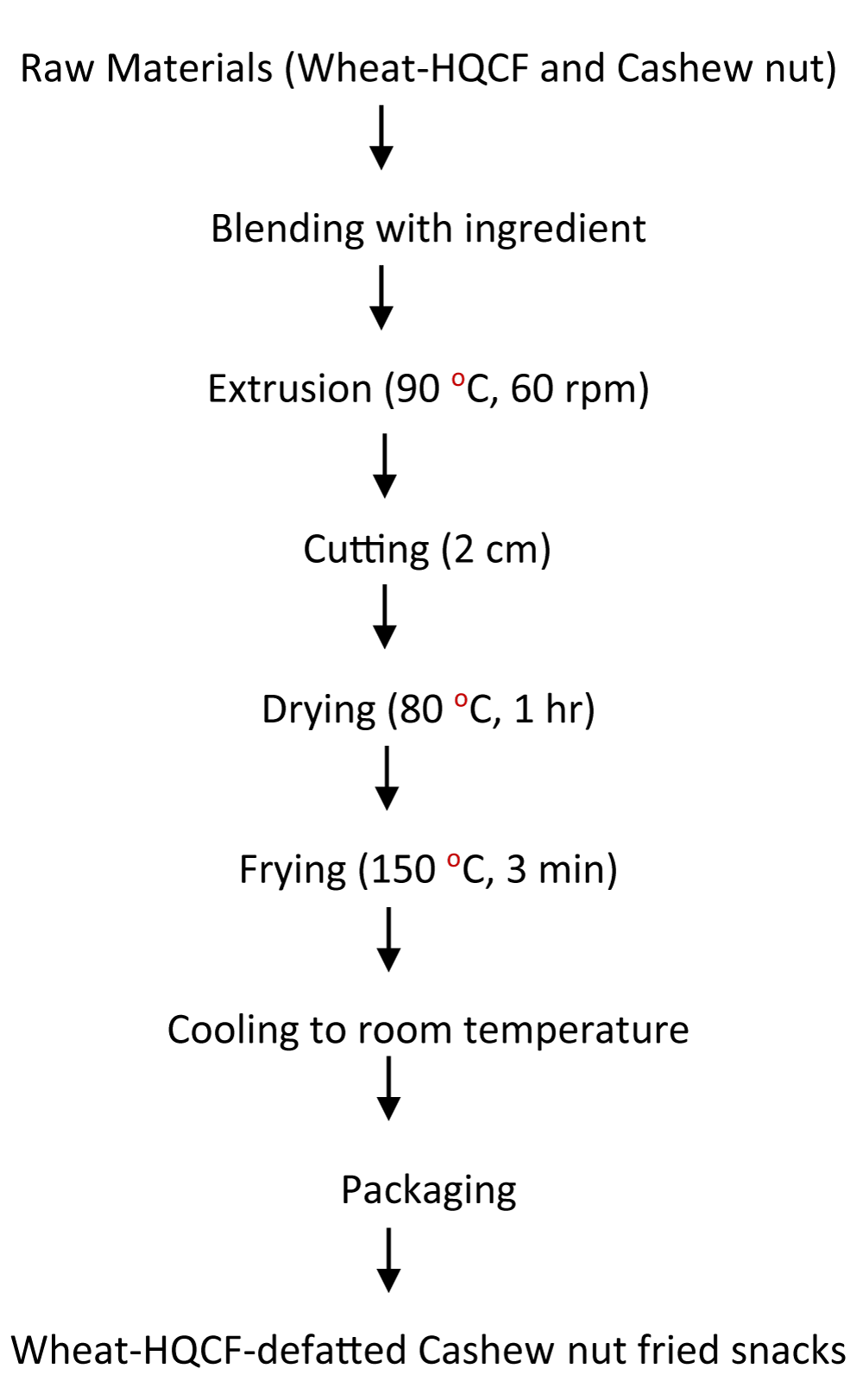
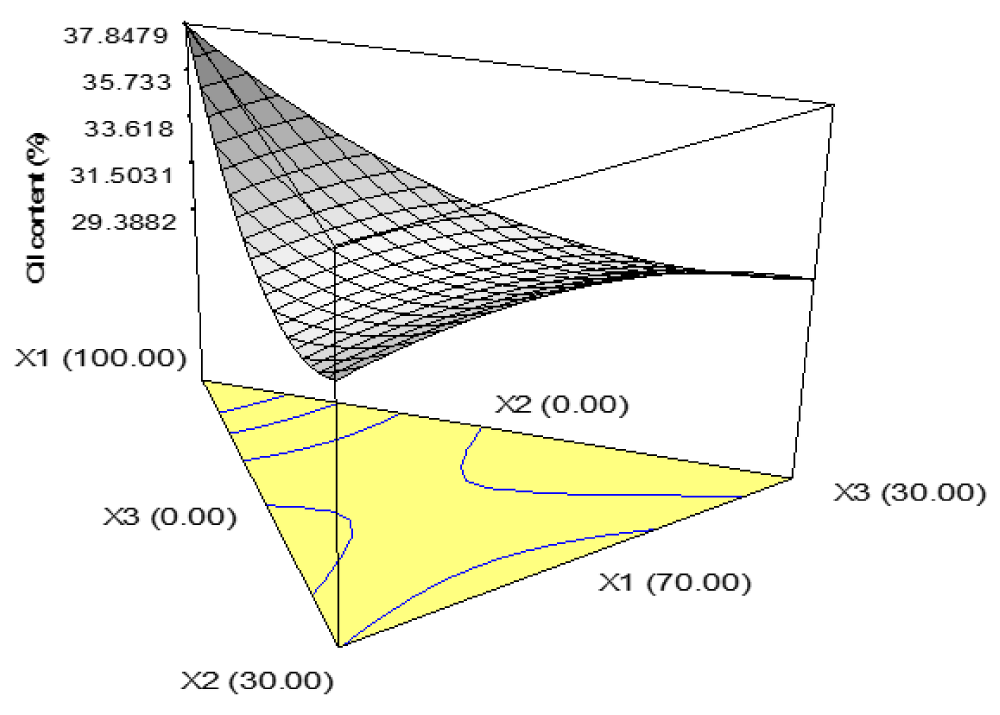
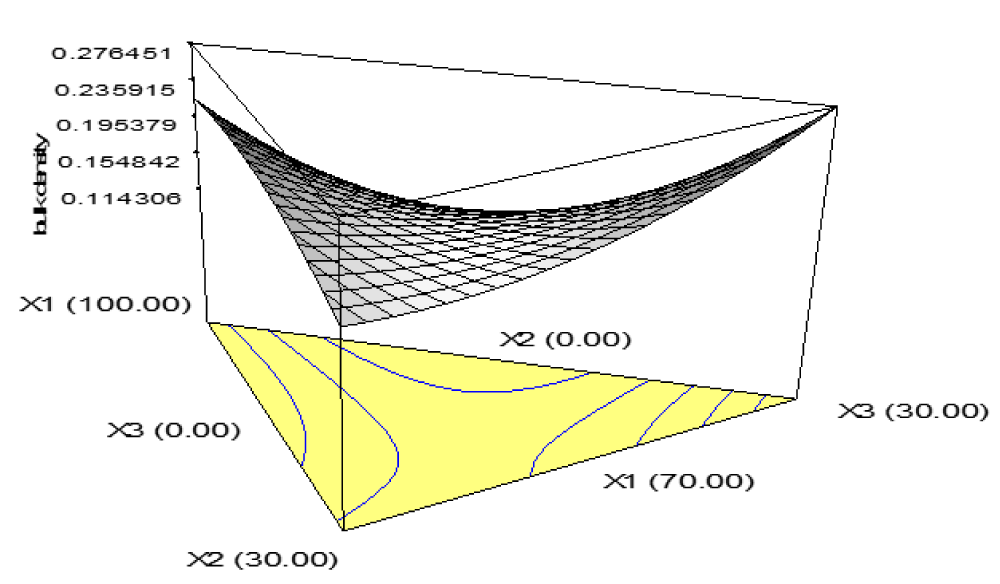
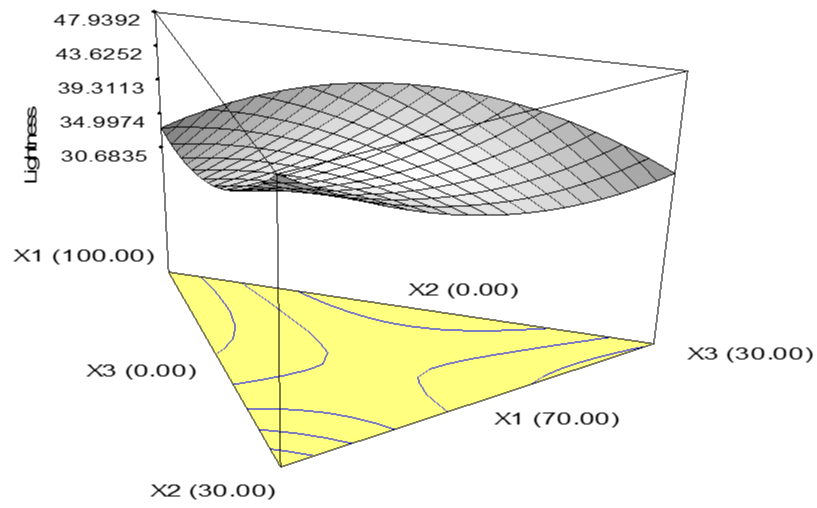
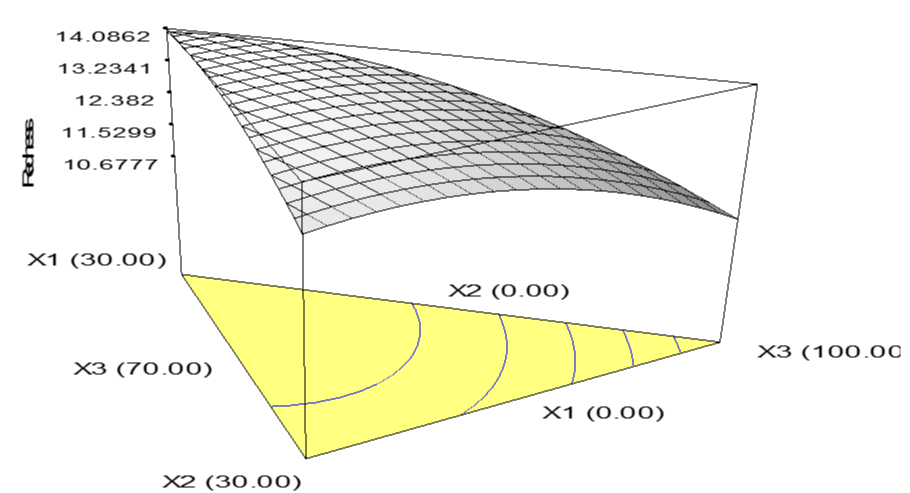
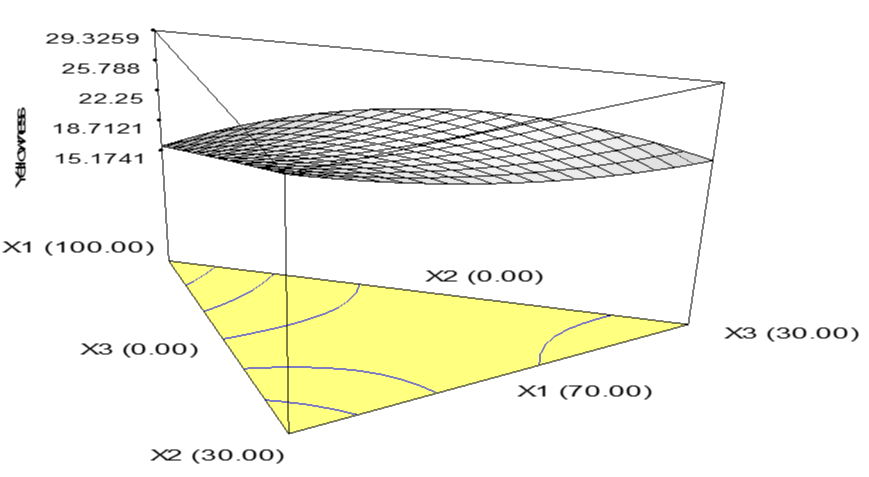
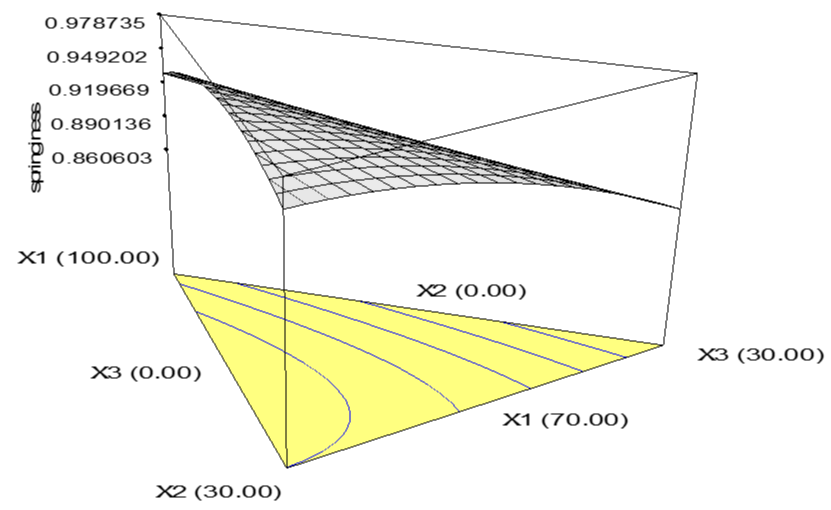
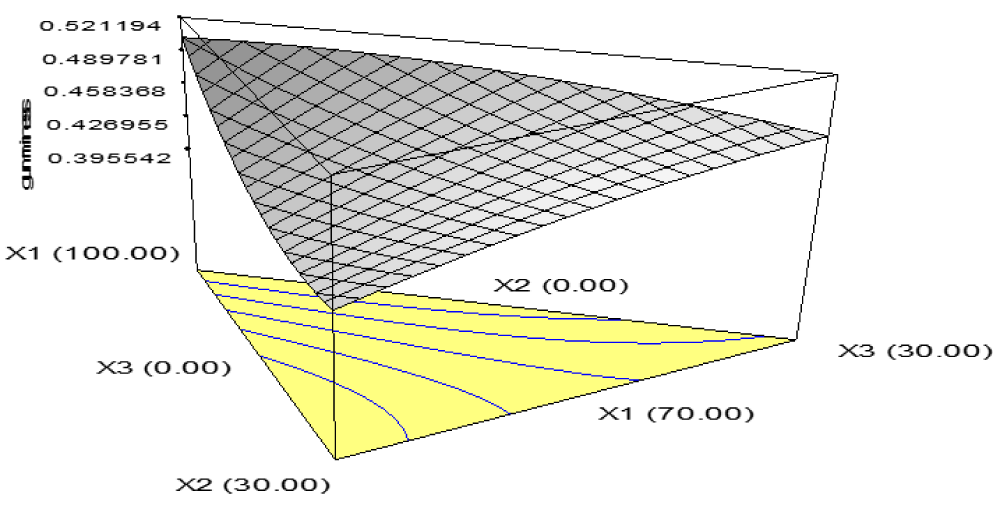
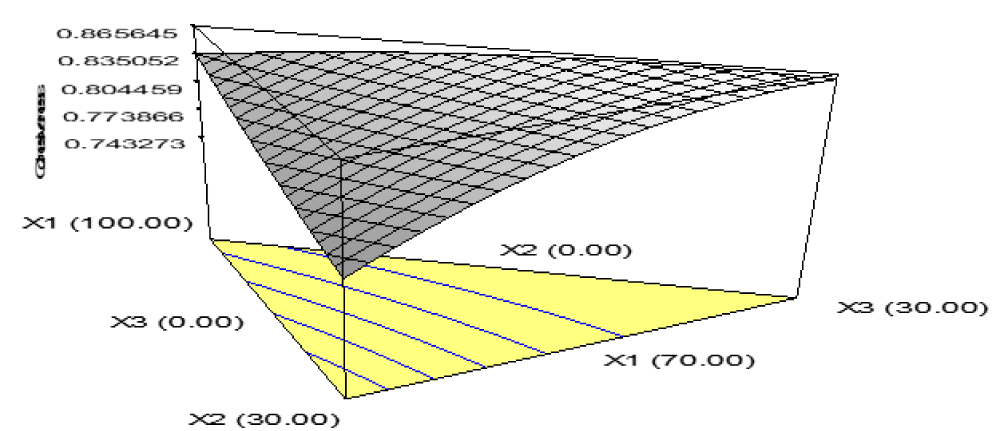
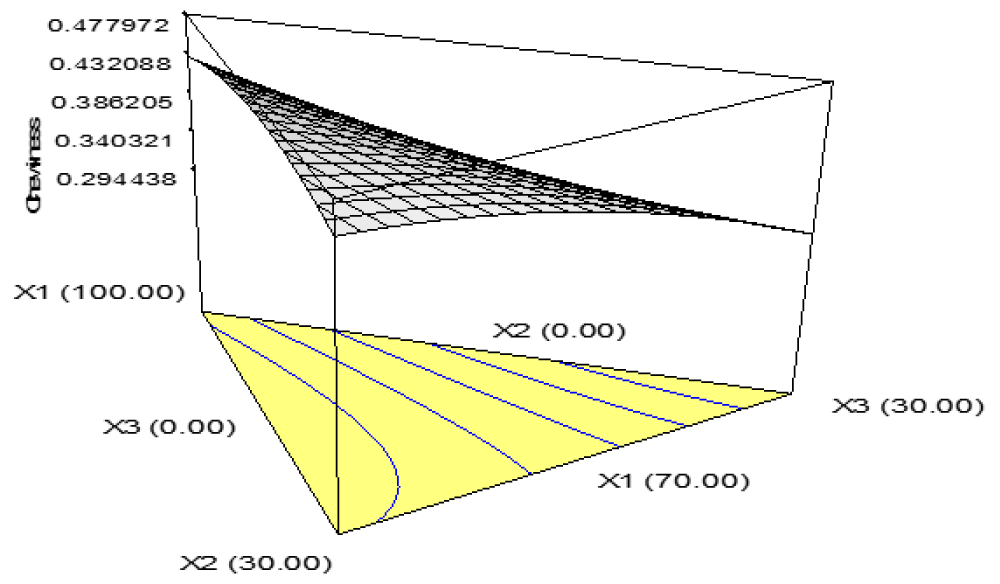
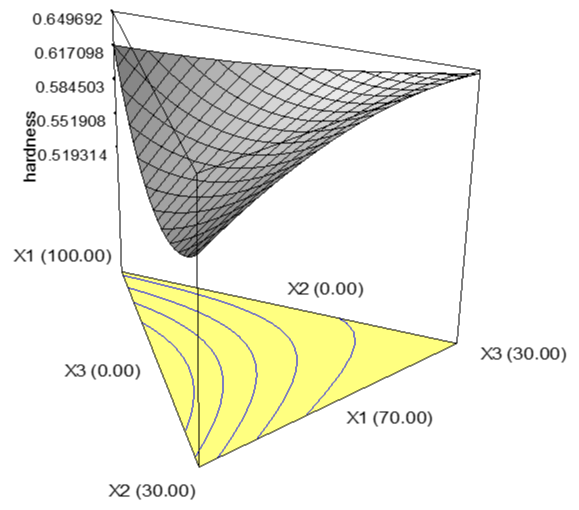

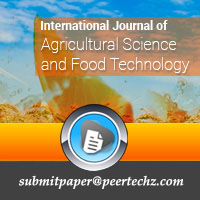
 Save to Mendeley
Save to Mendeley
